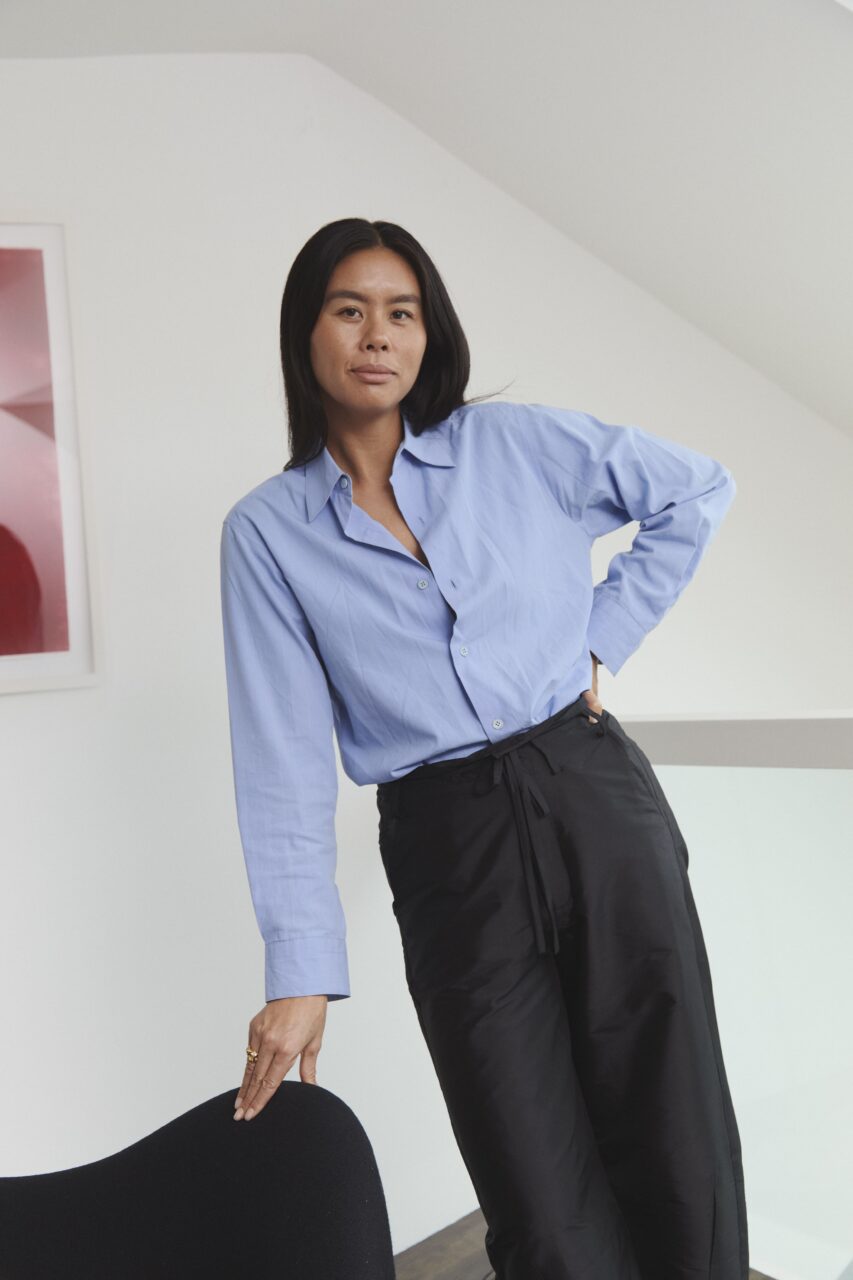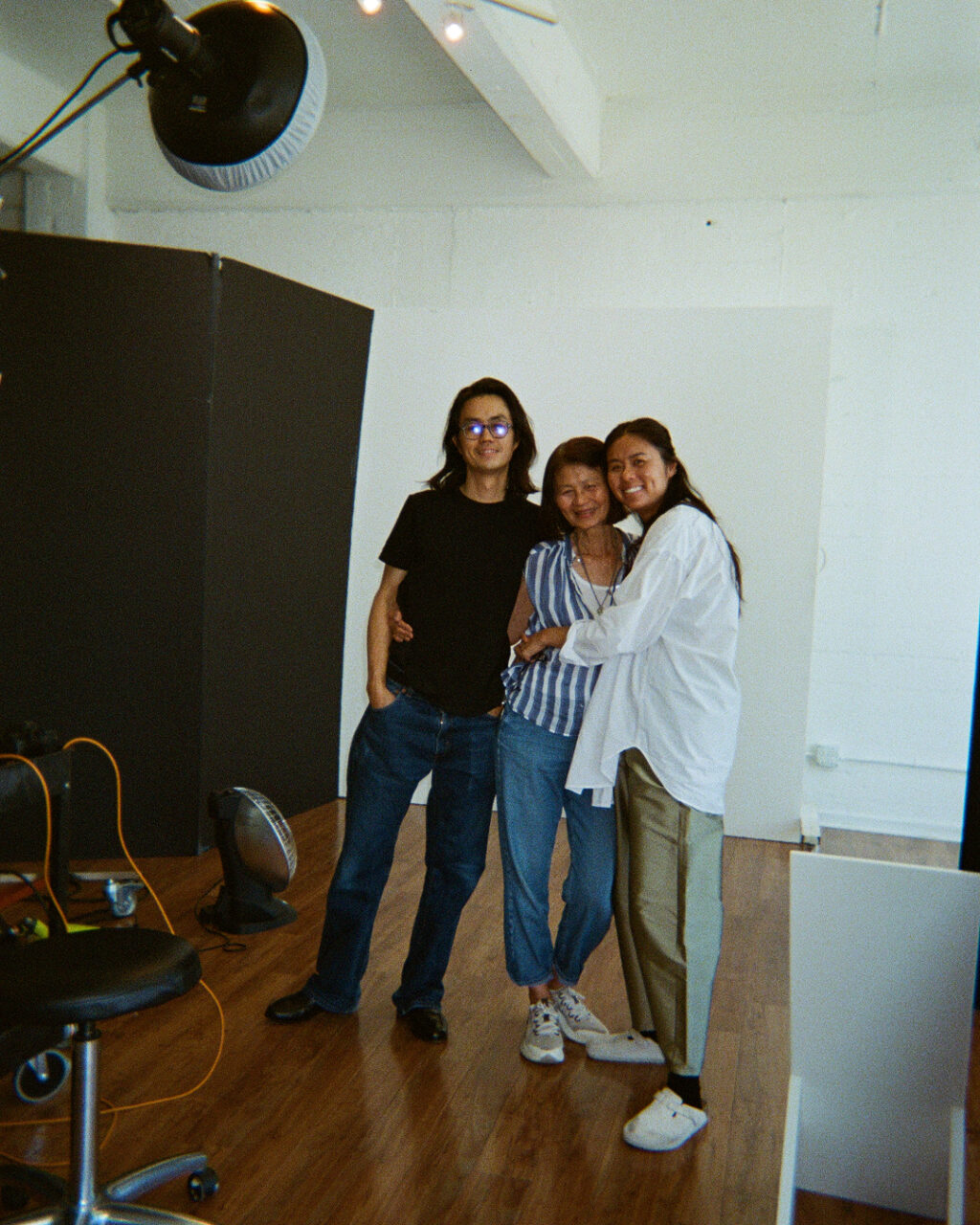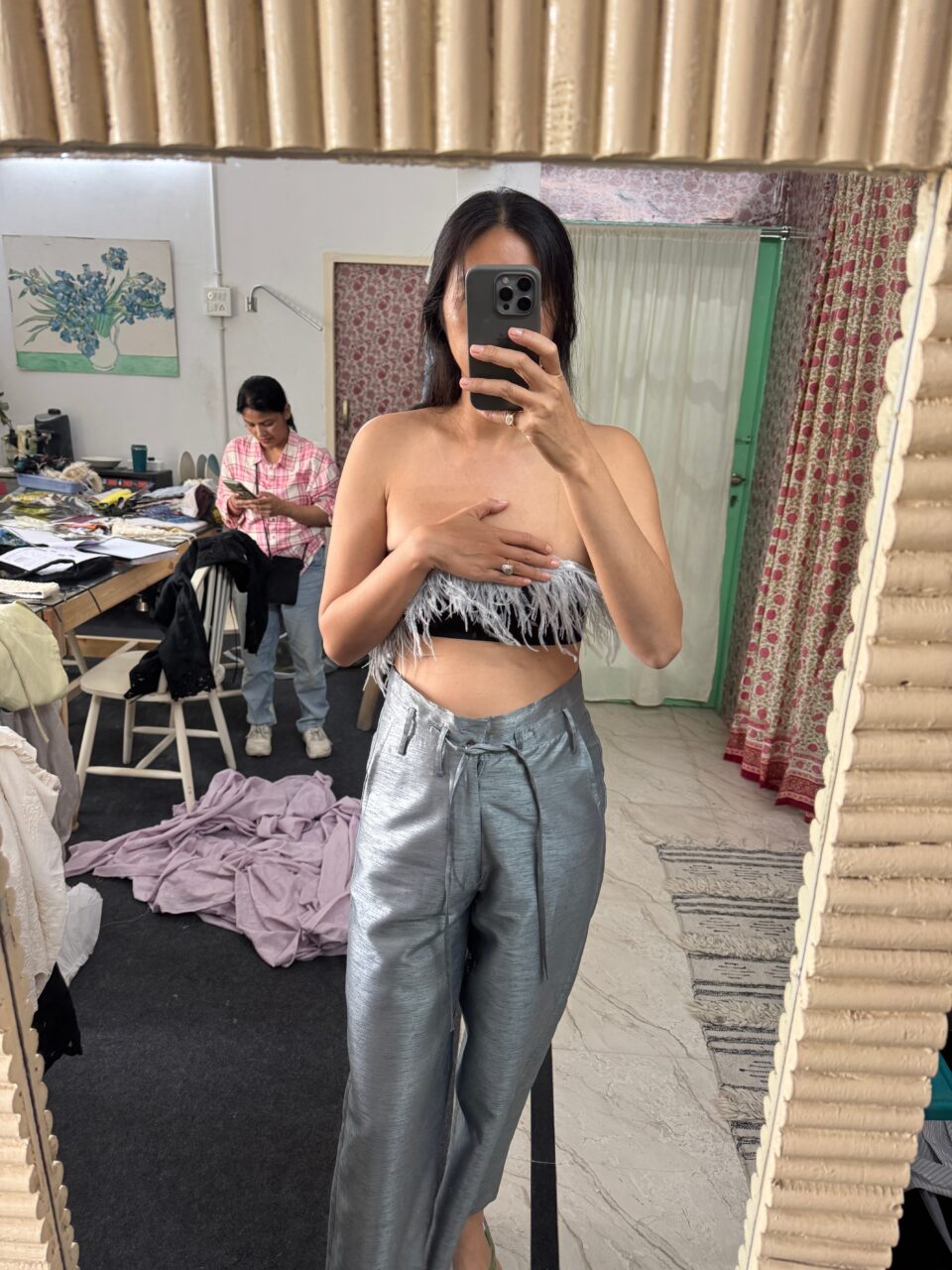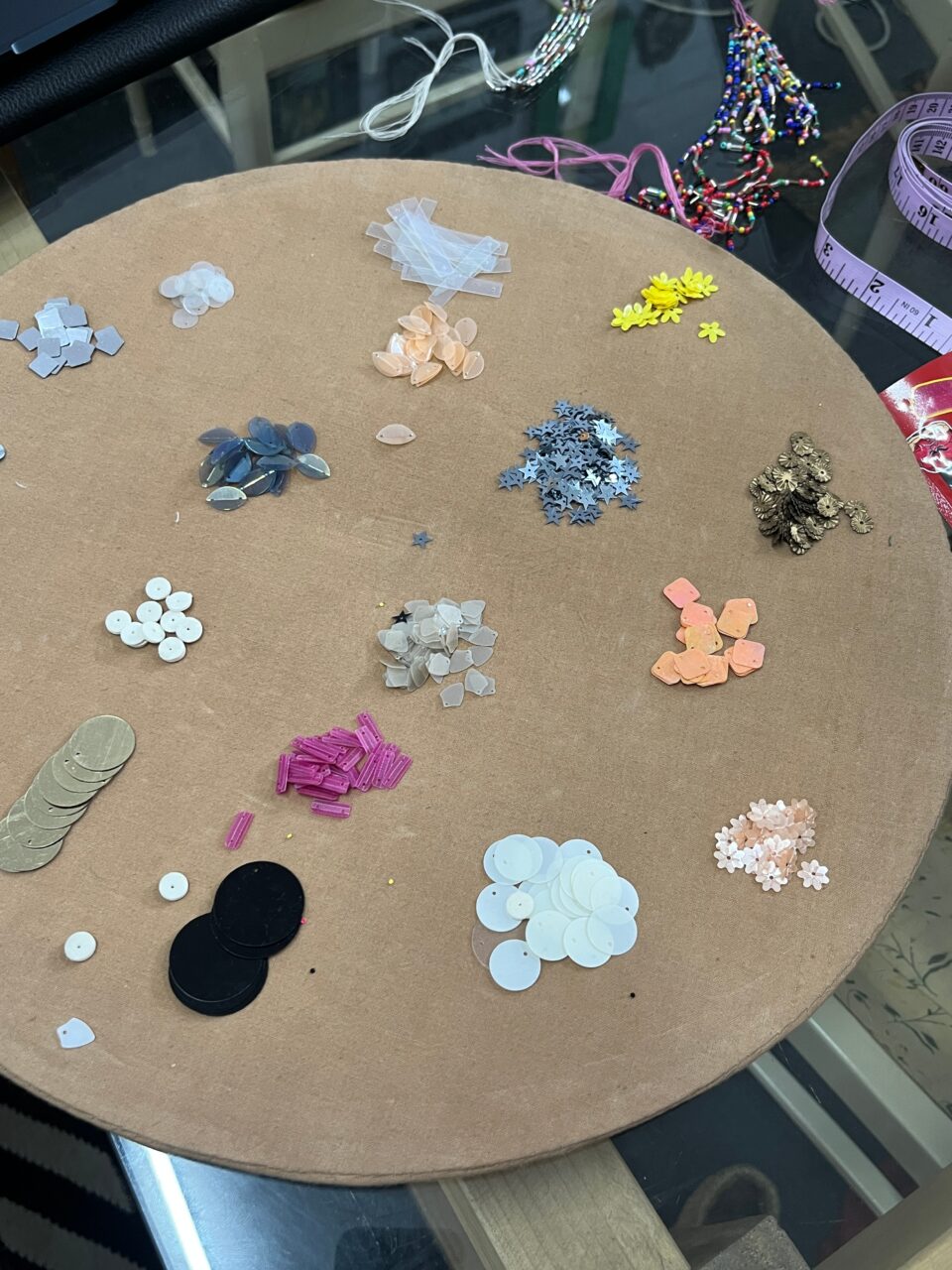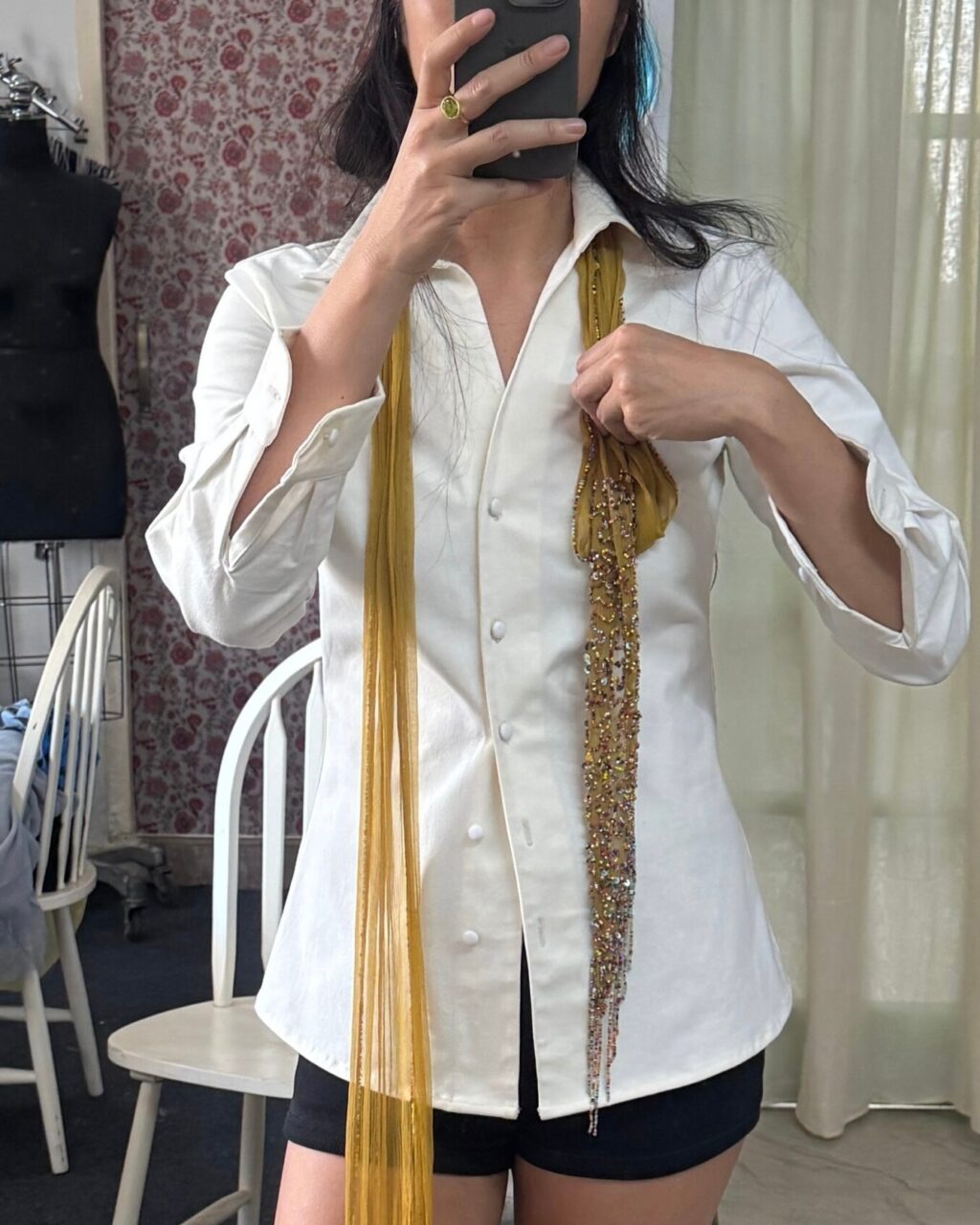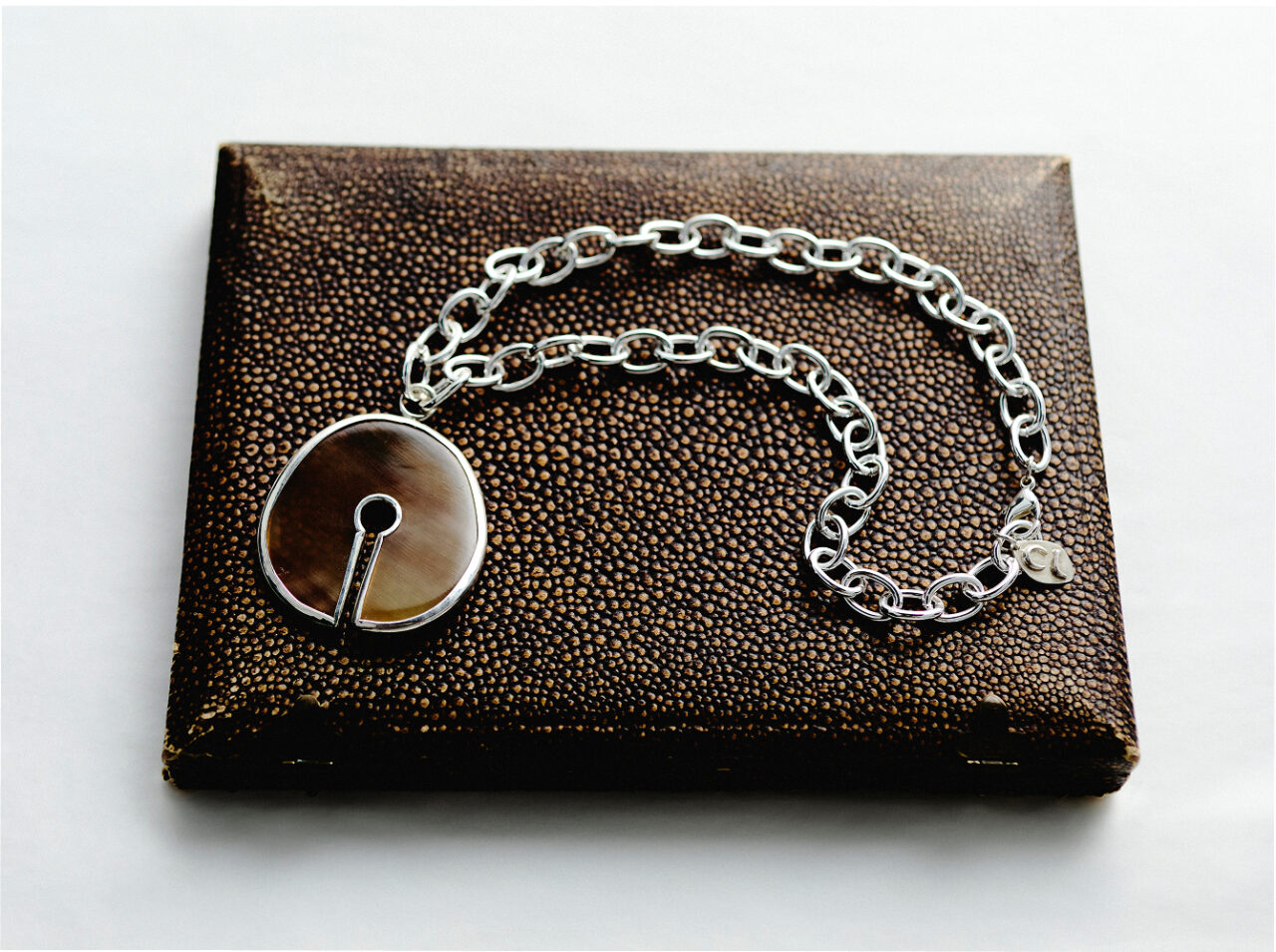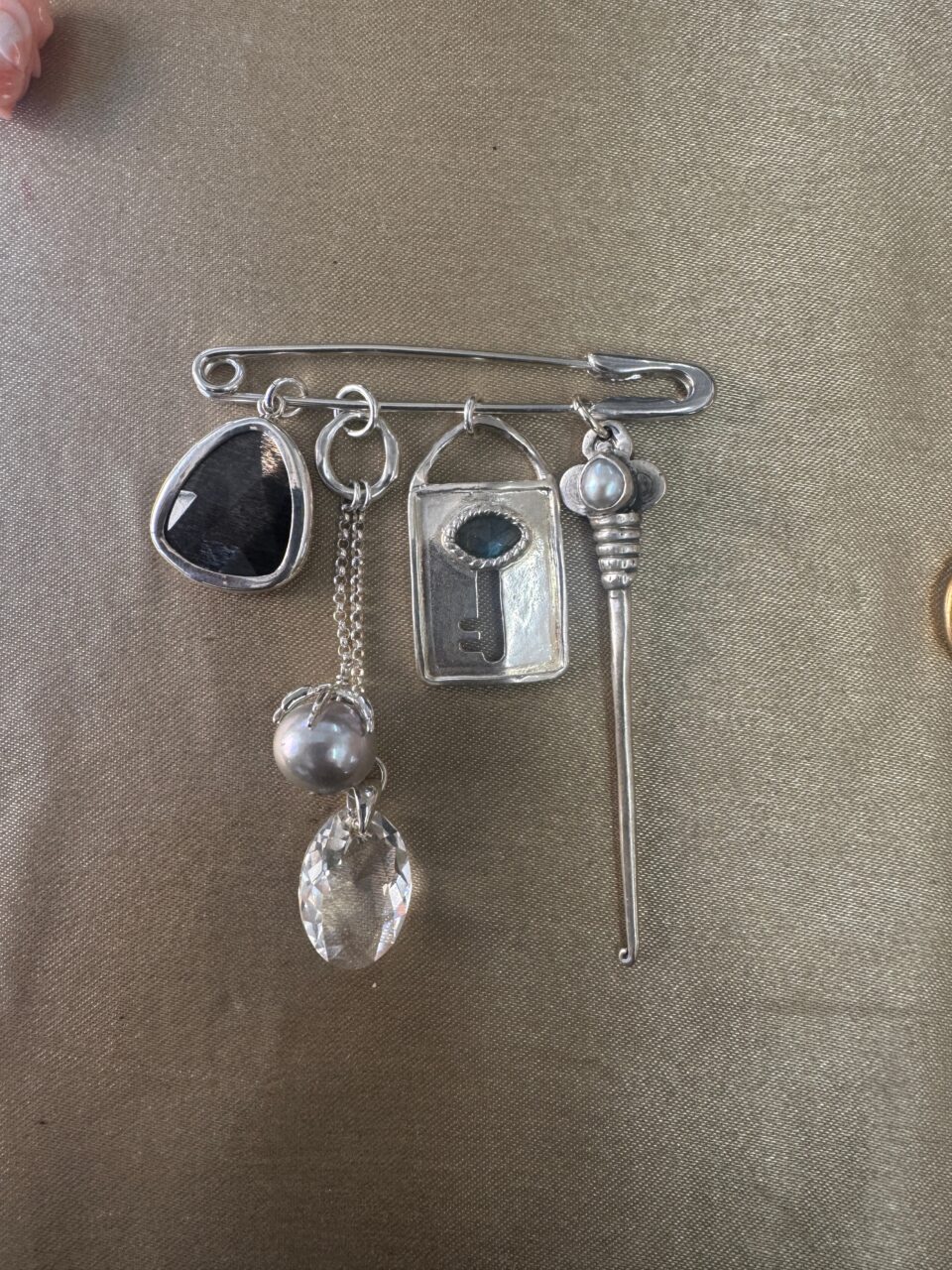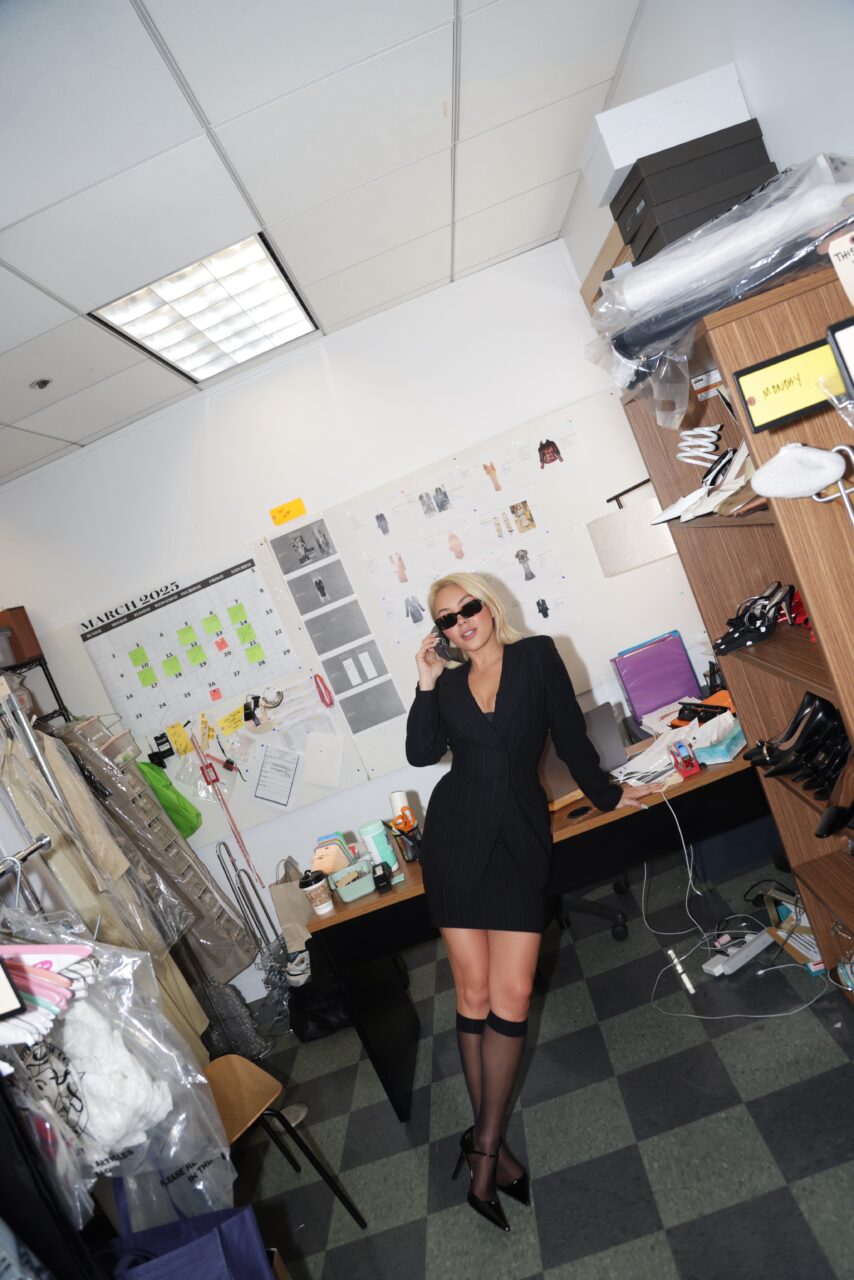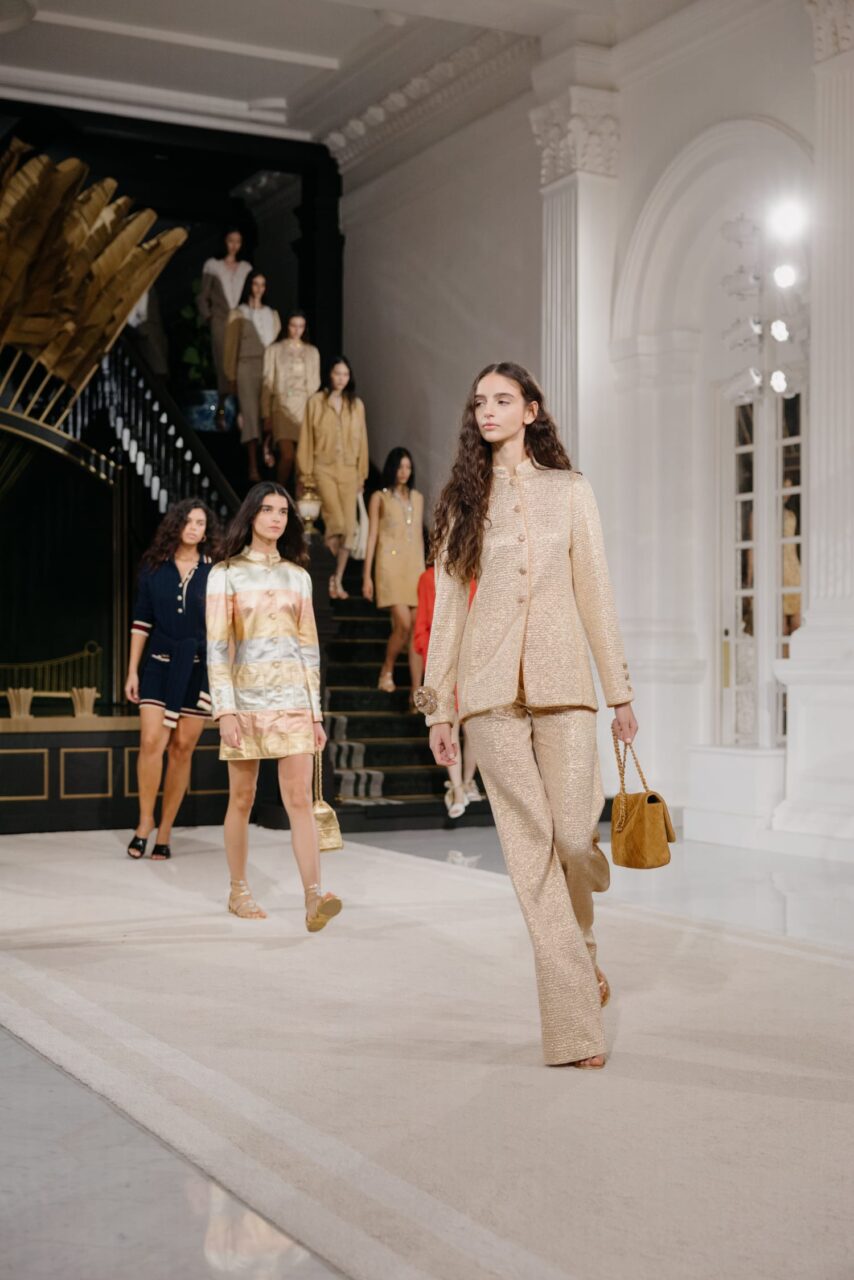Why did Tessa Tran get an economics degree before pursuing fashion? Her Asian parents, of course. After studying economics at UC San Diego for four years, “real” school according to Tran’s parents, Tran took an accelerated fashion degree program at the competitive Fashion Institute of Technology for two years. When she started working at Chan Luu, an eponymous jewellery and clothing brand her aunt founded almost three decades ago, Tran was an intern who wasn’t spared any of the nitty-gritty of the business.
“She’s a very tough, strong woman,” Tran says of her aunt. “I remember when I started interning, she’s like, ‘Okay, entry job, you’re doing quality control.’” There were thousands of grey dresses covered in paillettes, each awaiting her inspection. “I was going blind, but that was how I started.”
Today, Tran is the CEO and Creative Director of Chan Luu. For a few years, the brand was sold to a private equity firm, but Tran decided to buy the company back in 2023, making it truly her own.
“Now that it’s my baby and it’s a family brand again, I’m very particular with how I want to see things,” Tran says with the unwavering confidence of someone whose ownership at the company was not inherited, but earned; someone who has a sharp vision and isn’t weary of the risks it takes to see it through.
Rewind to the early 2000s, and you’ll discover that Chan Luu was the trendsetter of Bohemian style with hallmark wrap bracelets and handmade jewellery spotted on Hollywood celebrities the likes of Jennifer Aniston and Alessandra Ambrosio. Fans of the brand also included the United Nations, which appreciated Luu’s support of artisan craftsmanship and her fair labour practices, partnering with her on the Ethical Fashion Initiative to support female artisan communities, such as those in Kenya. The seeds of creativity and purpose Luu planted have since have found a new gardener in Tran, who tends to these blooms with the same sharp eye for design and unparalleled devotion to detail.
These flourishing roots stretch all the way to India, where Tran finds inspiration in intricate embroidery and delicate beadwork. The brand’s collaboration with an Indian factory spans decades, originally forged during Luu’s tenure. Over time, as both Luu and the factory’s founder stepped back, a new generation took the reins: Tran and the factory owner’s daughters, whom she’s known for 20 years and affectionately calls her “sisters.” “When I go out there, it’s us,” Tran says. “We’re in the design room, and we’re having so much fun.”
Tran’s love for handmade artistry took her on a journey to Burano, a historic lace-making island in the Venetian Lagoon. There, she saw firsthand the striking difference between machine-made and handmade lace—a distinction that, while precious, is fading as traditional practices dwindle. A shop owner lamented that the craft was becoming a relic of the past, but for Tran, it was a poignant reminder of what lies at the heart of Chan Luu.
All of these little handwork things go back to what I appreciate, I adore, I love. That's the type of work that I like to create. That’s probably the main thing that everything comes back to: handwork.
Chan Luu jewellery pieces have always been handmade in Vietnam, in a factory Luu built about an hour outside of Hanoi. Metalwork and diamond setting are still done by the company’s first employee from 30 years ago. And when it comes to their pyjamas, hand-embroidered French knots circle the entire collar and hem. “Those are the details when I look at something, and I look at it up close, I’m like, ‘Oh my god, wow. Obviously, a machine can’t do that.”
Brown Horn Padlock Necklace
Photo: Courtesy of Chan Luu
It’s also in these details that Tran’s vision for the brand is crystal clear. In the Fall 2025 collection, she introduces carved horn pendants, a speciality technique said to date back 400 years in Vietnam. She orients natural stones into cascading chandelier earrings and creates hand-carved white bone earrings shaped in a rose, prepared to bloom. By exploring the eternal yet ever-evolving beauty of nature through intricate handwork, Tran creates timeless statement pieces that feel like a breath of fresh air. “[Handmade pieces are] so special. They are those that are in your home and in your wardrobe that you feel have a sense of heart, and you can tell,” Tran says in earnest.
In 2022, she stamped her mark on the company by bringing back Ready To Wear with the Spring Summer 2023 collection. As a self-described “sun chaser”, her clothes are designed with lighter and more breathable fabrics suited for the Californian sun. The expansion is a risk she’s willing to take, given that it’s not immediately profitable, because it’s part of the particular vision she’s building for the brand. “It’s truly such a passion project, and it’s a lot of work, but it’s so much fun. And I love the way the clothing and the jewellery are interacting with each other.”
Perpetual reinvention is simply part and parcel of being a designer, and Tran shares how jealous she is of her lawyer and doctor friends who don’t have the pressure to ‘surprise’ and ‘recreate’ five times a year. It’s all the more difficult when the brand is so synonymous with a certain aesthetic that it becomes grouped into “trend buckets”, as Tran calls them.
“While it’s a new chapter, we’re still going back to the things that Chan really celebrated, which again comes down to handmade. In the long term, I have so many ideas about what I want the brand to be, but right now I’m really enjoying day by day.”
Editor
Karrie Lam